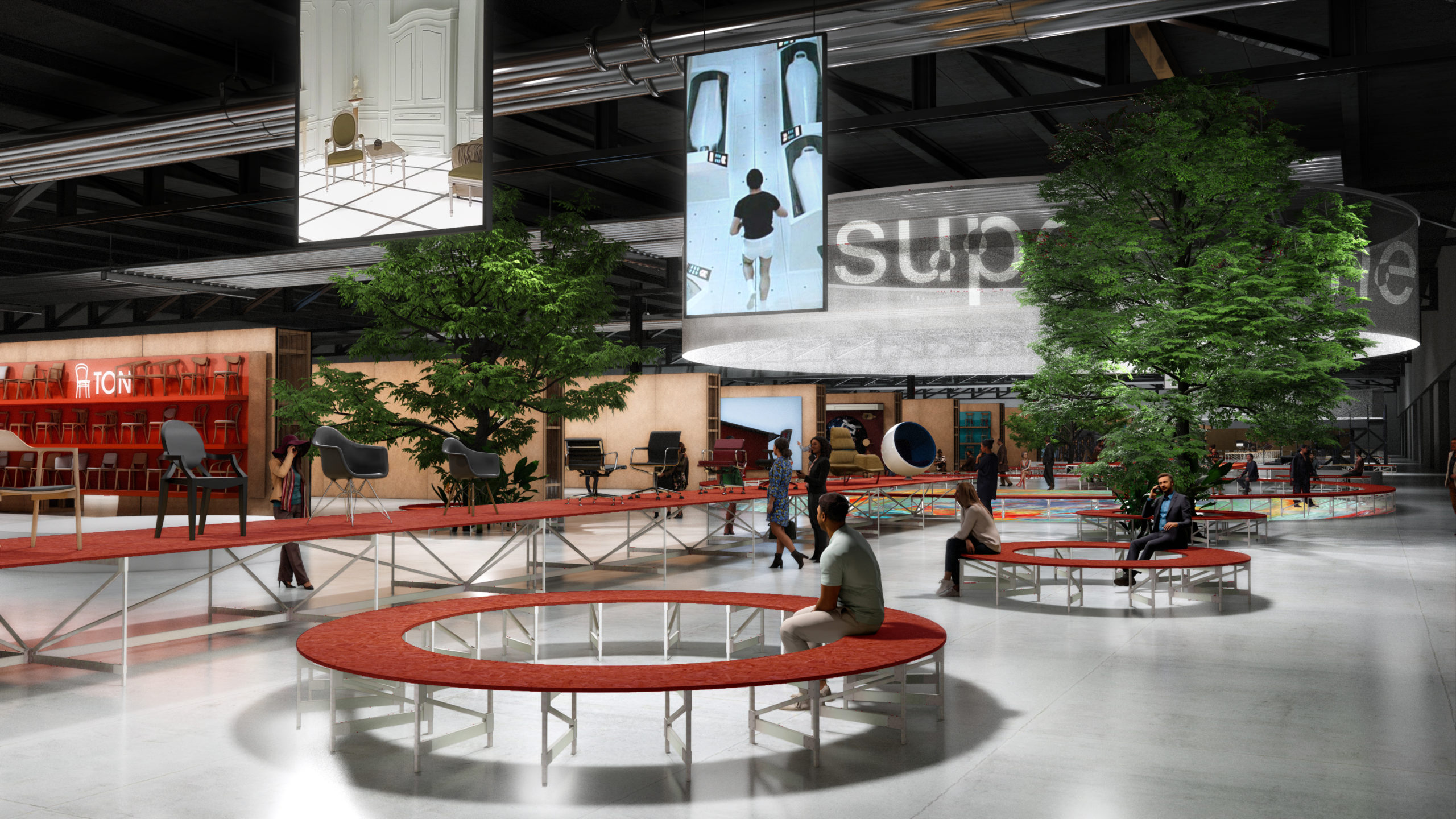After repeated postponements and cancelations in the past 18 months, the Salone del Mobile will return this September with a consolidated program entitled Supersalone. The reformatted Milan furniture fair—usually the largest in the world—is being helmed by noted architect and curator Stefano Boeri with the support of five recognized curators and designers, including Andrea Caputo, Maria Cristina Didero, Anniina Koivu, Lukas Wegwerth, Marco Ferrari, and Elisa Pasqual, both of Studio Folder. This illustrious team is working hard to mount an event that will purportedly champion the northern Italian city’s standing within the global design industry, a sense of togetherness over competition, a closer connection to consumers, and a renewed focus on sustainability. Much like smaller design fair Biennial Interieur, this one-off event will reflect a more curated and stylized approach, the masterful incorporation of commercial, cultural, and institutional exhibitors within a single space.

The tree-lined village concept that this team has envisioned will do away with the traditional sterile fair booth structure. In keeping with a growing industry push towards contextual showcases, Supersalone will be made up of a series of linear parallels in which brands will be able to compose their own narratives and display their wares. These depot-esque walls and horizontal vignettes will make for a more integrated and free-flowing experience. These modular units are being constructed using systemized components and untreated raw materials, in line with the project’s overall reuse over recycle ethos. The idea is that once the fair closes, these elements will be dismantled and reused at other events. A 200-tree forest installed at the fairground’s east gate will be transplanted in permeant locations throughout Milan’s city center.

Supersalone will be far less intense and exhaustive than the regular Salone del Mobile, which usually inhabits the entire 2.5 million-square-foot Fieramilano complex. Boeri has devised a series of thematic itineraries that will allow visitors to find what they are looking for rather than having them navigate endless rows of booths. Student work will be presented as part of the self-explanatory Lost Graduation Show. Dedicated arenas will host a robust talks program, while strategically located food courts will feature the latest in food design, not just overpriced cappuccinos and focaccia sandwiches. In breaking with even more convention—that of this event usually focusing on B2B interactions—the fair will be open to all types of visitors, who will also be able to purchase items directly from the displays.

“Supersalone is the result of the generosity and the creativity of the companies and design professionals at an extremely delicate point in the recovery and relaunch of the economy and culture,” said Boeri. “For the first time, the Salone del Mobile will be open throughout to the great consumer public. Thanks to the joint efforts of thousands of producers, professionals, retailers, technicians, workmen, display specialists, designers and fans, the Rho Fairgrounds will once again be the epicenter of international design.”
The Salone del Mobile would be nothing if it weren’t for the equally robust Fuorisalone festival that, in a normal years, transforms the streets of Milan proper into a large extended fair. This year’s event will center in and around the historic Trienniale Milano museum.
Supersalone runs from September 5 to 10.
